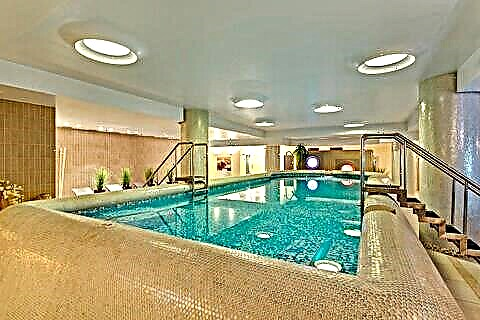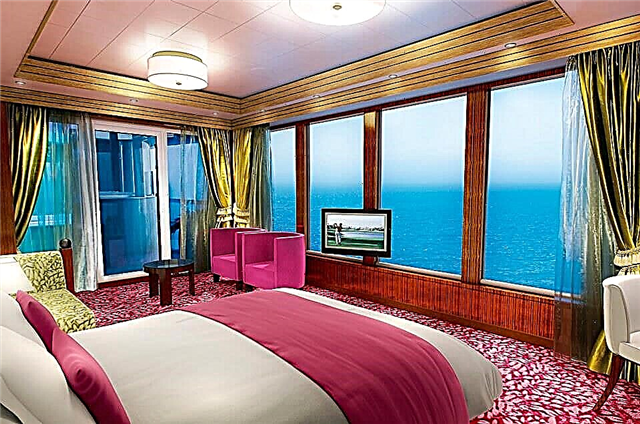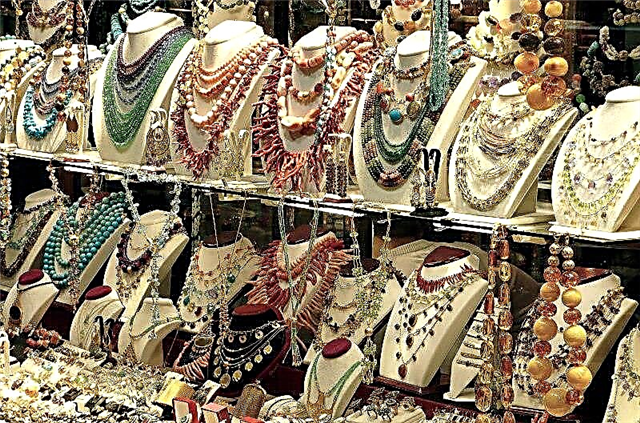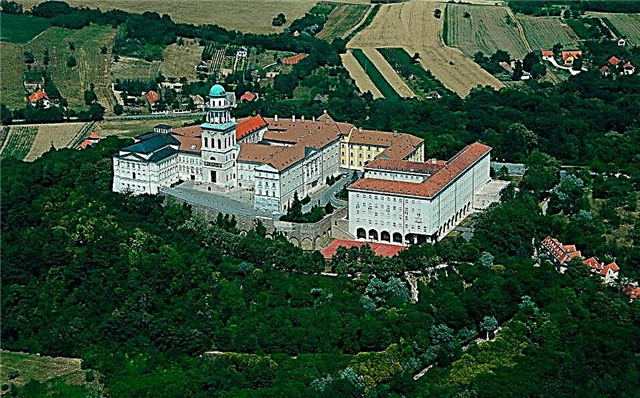Address: Peterhof, Lower Park
Start of construction: 1800 year
Completion of construction: 1803 year
Architect: A. N. Voronikhin
Coordinates: 59 ° 53'07.9 "N 29 ° 54'33.1" E
Content:
Elegant light buildings rise between the intricate parterre flower beds at the foot of the Great Peterhof Palace and the green alleys of the Lower Park. Paired colonnades with golden domes and fountains were created during the heyday of Russian classics and are named after the famous architect Andrei Nikiforovich Voronikhin. It is impossible to walk past the beautiful pavilions, and there are always many visitors near them.

View of the Sea Canal and Voronikhinsky Colonnades from the Grand Cascade
Fountain pavilions in the 18th century
The architects who were commissioned to build the royal residence understood that the Sea Canal should have a picturesque design. It was important that the guests of the sovereign, approaching from the sea, could get an idea of the scale of the palace complex even on the approaches to the Great Peterhof Palace.
In order to solve this problem in 1721, the talented architect Nicola Michetti began to erect small paired pavilions with fountains from brick and wood. They were through, had flat roofs and in those days were called "small galleries with closets."
In 1723, the sovereign examined the finished pavilions, was satisfied with the work of the builders and ordered several fountains to be built here. The projects of the new water cannons were prepared by the experienced architect Mikhail Grigorievich Zemtsov. Each gallery had seven niches. At the suggestion of the architect, four water cannons with decorative sculptures made of lead and three fountain-bowls on high thin legs were installed in them.

View of the colonnades from the Grand Palace
Fulfilling the desire of Peter I, in addition to the fountains, an unusual musical instrument with glass bells was placed in the gallery located on the east side. Klokspiel was built by the "bell and playing music master" I. Kh. Foerster, and the melodic bells sounding on it were set in motion by jets of water. Initially, there were 88 bells on the clockspiel, but then their number changed. After the death of Peter I, the gallery niches were decorated with graceful marble statues, and the artists who worked in Peterhof painted the ceilings in all the pavilions and "closets".
In 1745, as a continuation of the "water ventures", a new musical instrument was arranged in the western pavilion, which was made by the organ master Balthasar Fries. The amazing tool was called the "jaeger thing". It was equipped with wooden figures of barking dogs, twelve songbirds, a hunter blowing a horn, and a pair of satyrs playing tunes on flutes.
The musical curiosity acted from the pressure of water. Jets fell on a water wheel with painted figures, set it in motion, and music began to sound. It is noteworthy that various sounds were made by the fur installed inside the organ.

Samson fountain against the background of the colonnade
Colonnades in the 19th-20th centuries
By the end of the 18th century, Peter's pavilions were badly dilapidated, and the Russian Emperor Paul I ordered to replace them with new ones. The project of new buildings was commissioned to prepare the famous Russian architect A. Voronikhin. The emperor wanted future buildings to retain their original scale and old "idrological games". The construction of the pavilions lasted from 1800 to 1803.
Voronikhinsky buildings became brick. The upper part of the buildings was decorated with Pudot stone, the plinth was built of pink granite, and the slender columns were made of silvery granite and snow-white marble. At the top, gilded lead bowls for fountains were mounted, which supported the pedestals hewn from Pudot stone.
In front of the stairs leading to the galleries, expressive figures of granite lions appeared, carved according to the models of the sculptor Ivan Prokofievich Prokofiev. In addition, the interior of the fountain pavilions was decorated with bas-reliefs made by the sculptor Ivan Petrovich Martos. The result exceeded all expectations, and the Russian Academy of Arts awarded Voronikhin the title of "architect" for a brilliantly performed work.

General view of the colonnade
In the middle of the 19th century, the experienced architect Andrei Ivanovich Shtakenshneider was engaged in the reconstruction of the fountain complex. During the alterations, the facades of the pavilions were decorated with marble panels, which were carved by the masters of the Peterhof Lapidary Factory. It is noteworthy that for the new decor, the builders used 30 thousand pounds of first-class Carrara marble, which was building a lot of money.
The ceilings of the galleries were decorated with picturesque stucco ornaments, and colorful Venetian mosaics appeared on the floor. In addition, during the restoration, the tarnished lead thickets of the fountains were replaced with copper ones. After such a large-scale reconstruction, the colonnades looked great!
Another restructuring of Voronikhin's creation was carried out in the 1870s, and was led by the St. Petersburg architect Eduard Lvovich Gan. The builders covered the vault of domes with wooden ceilings, and this greatly affected the decoration of the interiors.
From 1941 to 1944, the nearest suburbs of St. Petersburg were in the zone of Nazi occupation. Retreating, Hitler's troops blew up most of the architectural monuments and fountains of Peterhof. When Soviet troops entered the territory of the former royal residence, they found there continuous ruins.

The post-war restoration of the Voronikhinsky colonnades took a long time. New fountain bowls and rounded domes were made according to the drawings prepared by the architect Alexander Ernestovich Gessen. The restored colonnades were opened to the public in 1966.
Voronikhinsky galleries today
Slender white marble pavilions stand out noticeably against the background of the spacious Lower Park. They look great both from the Sea Canal and from the parterre flower beds that adorn the foot of the majestic Grand Cascade. Light galleries effectively set off the crowns of park trees, green mowed lawns and variegated colors of flower beds, and the monumental fountain design emphasizes the graceful proportions of the architectural monument.
Sometimes Voronikhinsky galleries are compared to theatrical backstage. Indeed, for travelers coming from the Gulf of Finland, they "open up" the main palace ensemble.

View of the pavilion of the Voronikhinskaya colonnade
Each stone structure is 21 meters long and is decorated with eight slender paired Doric columns, which stand on a neat granite plinth. The columns can be climbed up the steps of the stairs. According to tradition, since the beginning of the 19th century, the entrance to the galleries is "guarded" by granite figures of lions.
The rounded domes shining in gold rise above the square stone pavilions 9 meters from the ground. They shine brightly in any weather, but make the biggest impression on a sunny day. The gilded domes are not simple decorations, but original fountains. Water rises under pressure to the very top and flows down the rounded domes, further enhancing their already bright shine. Then streams of water fall in a wide veil into the marble pools set under the windows. Thanks to such a device, it seems that the mesh windows of the pavilions-gazebos are covered with light translucent curtains.
The upper part of the buildings is fenced with a classical balustrade, behind which three gilded bronze fountains are visible. Water from them gushes upward in thin streams, and then breaks down to the edges of shiny bowls and falls into the pools.
Voronikhinsky colonnades are located in the central part of the Lower Park, which is open to visitors every day from 9.00 to 20.00. The ticket offices of the park are open from 8.45 to 19.00. You can view the architectural monument free of charge.

Colonnade
How to get there
From late spring to mid-September, high-speed vessels sail from several berths in St. Petersburg to the pier of Petrodvorets. You can walk from Petrodvorets harbor to the colonnades in 10-15 minutes.
Minibus taxis to Peterhof run from the Baltiysky railway station and the metro stations Prospekt Veterans, Avtovo and Leninsky Prospekt. In addition, the museum-reserve can be reached by commuter train. From the Baltic railway station, you need to get to the station "New Peterhof", and from there come to Petrodvorets by buses.











